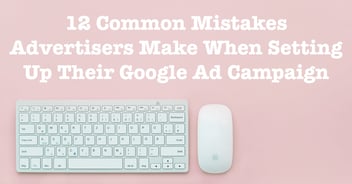
Digital advertising is a science, and there’s a formula behind improving your click-through rate (CTR) and creating ads that resonate with your audience. If you’re no longer satisfied with below average CTRs, fear not! This article will cover the basics of CTRs, what defines a good CTR, how to target more relevant traffic, and finally, how to create better ads that resonate with your audience and perform better.
Read this article to better understand your site's analytics!
What is CTR?
Click-through rate is a metric that measures how well your ads and keywords are performing. Specifically, CTR equals the number of clicks your ad receives divided by your ad’s impressions. For example, if you receive five clicks on your ad and 100 impressions, your CTR is five percent.
Click-through Rate (CTR) = # of Clicks / # of Impressions
CTR is a determining factor in how well your ads resonate with your audience. If your CTR is high, your ads are likely highly engaging and relevant to what users are searching for on Google. Click-through rate is one of several factors that influence your Quality Score, a value between 1 and 10 that Google assigns to your ads and keywords (10 being the highest).
Google determines your Quality Score based on your expected CTR, ad relevance, and landing page experience. When building an ad campaign, it’s crucial to focus on these factors because a higher Quality Score will lead to a higher Ad Rank, which means you can pay less for your keywords and win a higher position in the Google auction!
What is a good CTR?
The answer to this question is highly debated because average CTR varies across industries, and your expected CTR depends on your historical ad performance. Generally, the higher your ad’s position, the higher your CTR.
However, in the effort to improve your CTR, it’s important to bid only on keywords that are relevant to your business. Otherwise, you’ll risk driving irrelevant traffic to your site, which means unlikely conversions and a lower ROI.
Strategies to Improve Your CTR
Target More Relevant Traffic on Search
In order to increase your CTR above your industry’s average, it’s important to target relevant users and build helpful ads that resonate with your audience. To do so, use targeting only on the Search Network because this allows you to target your audience by bidding on specific keywords that relate to their search queries. This targeting strategy allows you to not only measure keywords that boost your CTR but also to identify those that underperform and fall short of your target metrics.
Bid on Specific Keywords
Another way you can reach a more relevant audience is to bid on long-tail keywords (3–4 words) rather than on more general, highly competitive keywords. Although you’ll receive fewer searches with this approach, it enables you to reach more qualified customers who are searching topics that specifically relate to your company’s offerings.
When building your ad campaign, it’s also important to note keyword match types because they can also affect your CTR. For example, if you set your keywords to broad match, your ads may show on searches containing misspellings or synonyms of your keywords; however, if you use a more targeted match type such as exact match, your ads will only show when a search contains exact matches or close variations with the same meaning.
Use Negative Keywords
Using negative keywords is another way to cut down on irrelevant searches and improve your CTR. If you frequently monitor your keyword performance and notice certain unrelated search queries triggering your ads, you can add these keywords or phrases to a negative keyword list to prevent your ads from showing to users performing these searches. Similar to keyword match types, you’ll also have to take note of the different negative keyword match types to verify that your ad will not be displayed in irrelevant searches.
Include Ad Extensions
By incorporating ad extensions into your Search ads, you can show more information about your business to people on Google at no additional cost. Ad extensions can feature unique callouts that set your business apart from the competition. For example, you can create call extensions that allow users to easily contact your business, or you can create location extensions to show people where your business is located.
In order for your extensions to appear, your ads must rank in positions 1 through 3 on Google Search. If you’re not currently using ad extensions for your business, it’s an easy way to improve your relevancy and get more clicks on your ads!
Focus on Your Content
One of the final components of improving your CTR is your content! When people are searching on Google, they don’t want to see an ad that provides no value to their search. They want to see ads that offer relevant content and valuable offerings that are tailored to their needs.
One way to accomplish this is to use your keywords in both your ad content and landing pages. You can also manipulate your display URL by including keywords after the website domain. Finally, highlight any offers that differentiate your business from the competition. For example, use enticing offers such as, “free consultation” or “24/7 support.”
Now It’s Your Turn
By simply focusing on the key components that impact CTR and taking these strategies into account when building your ad campaigns, you, too, can crack the formula behind creating ads that resonate with your audience and achieve a higher CTR.
If you’re looking for help with your next Google ad campaign, contact our digital advertising team here at Blue Frog for a free consultation and strategy recommendation!




